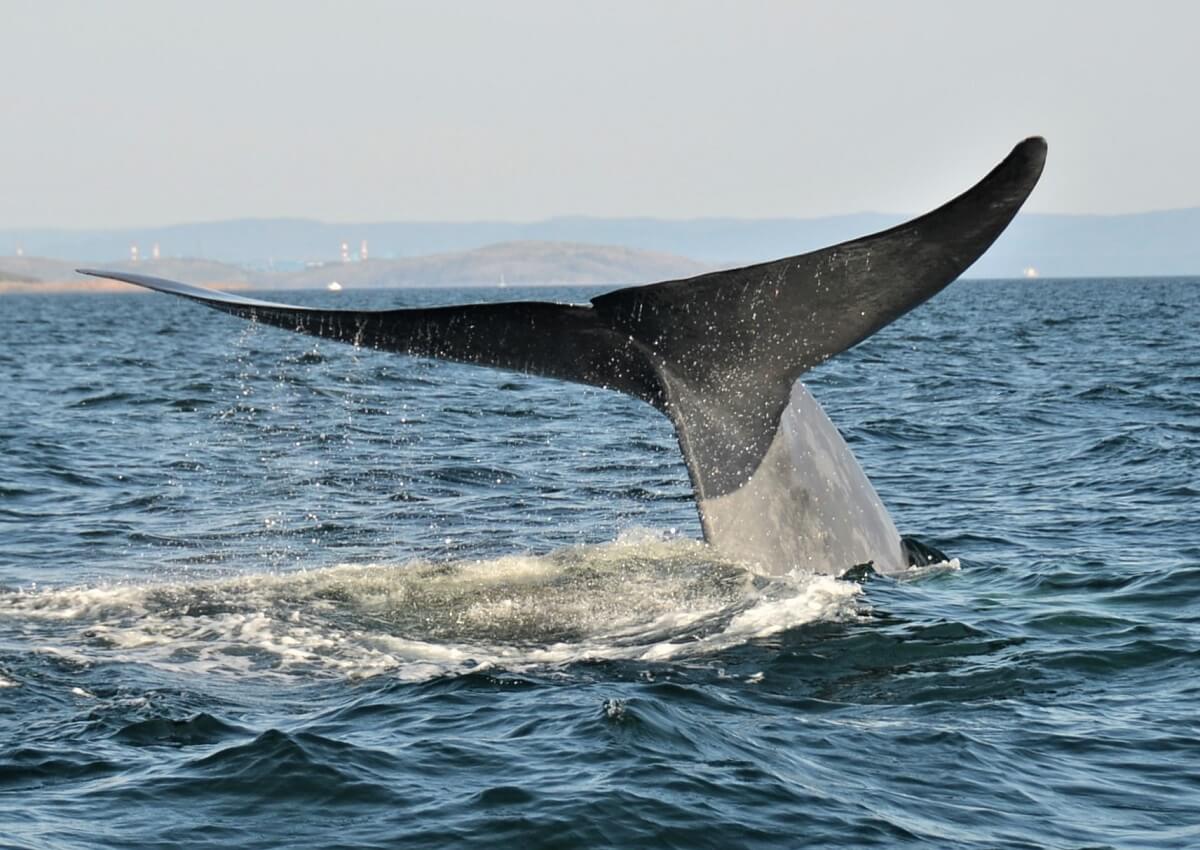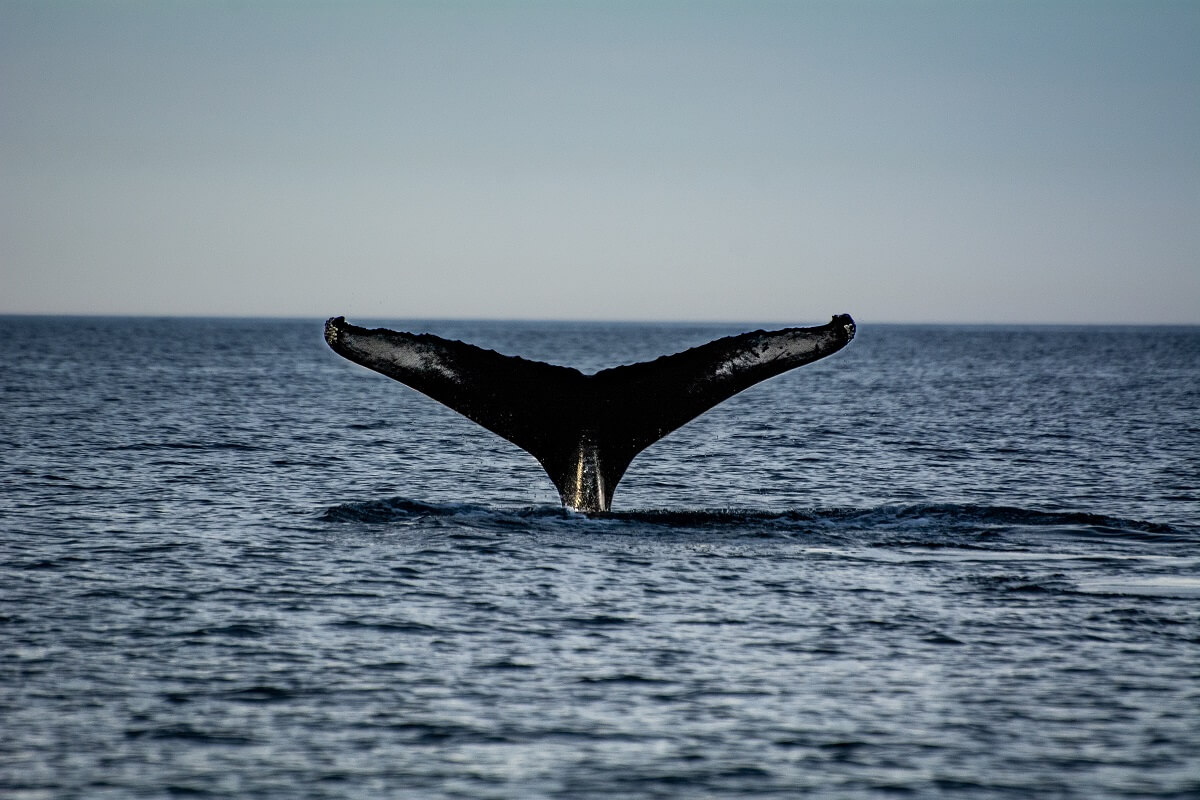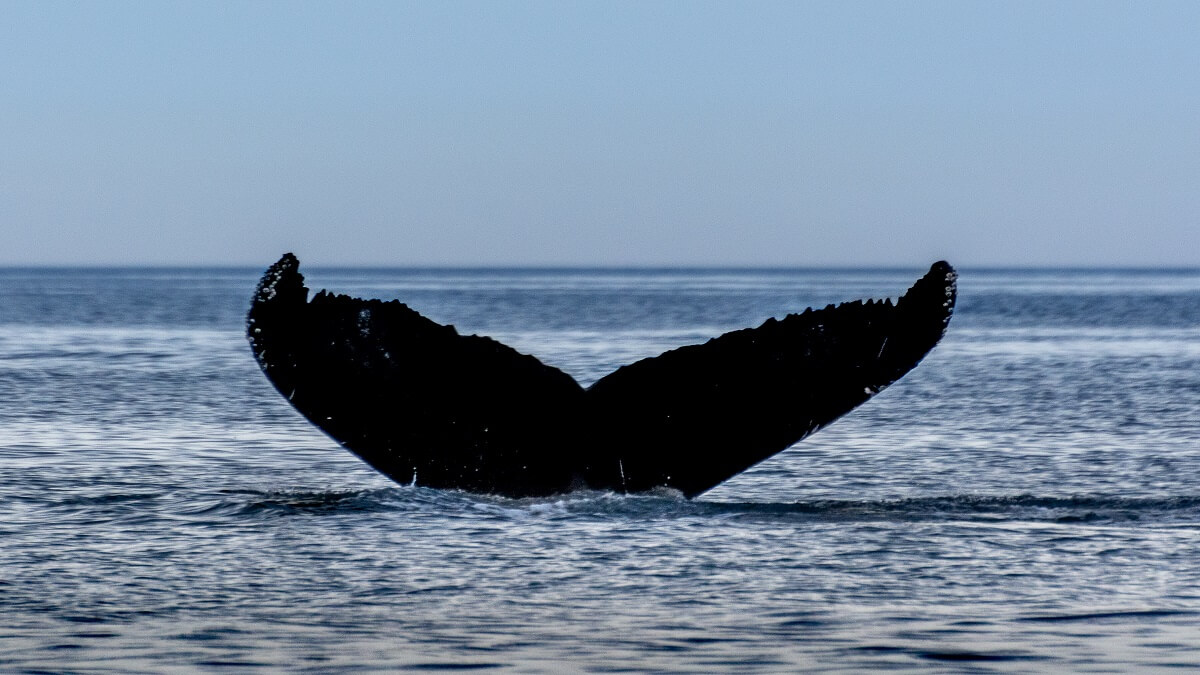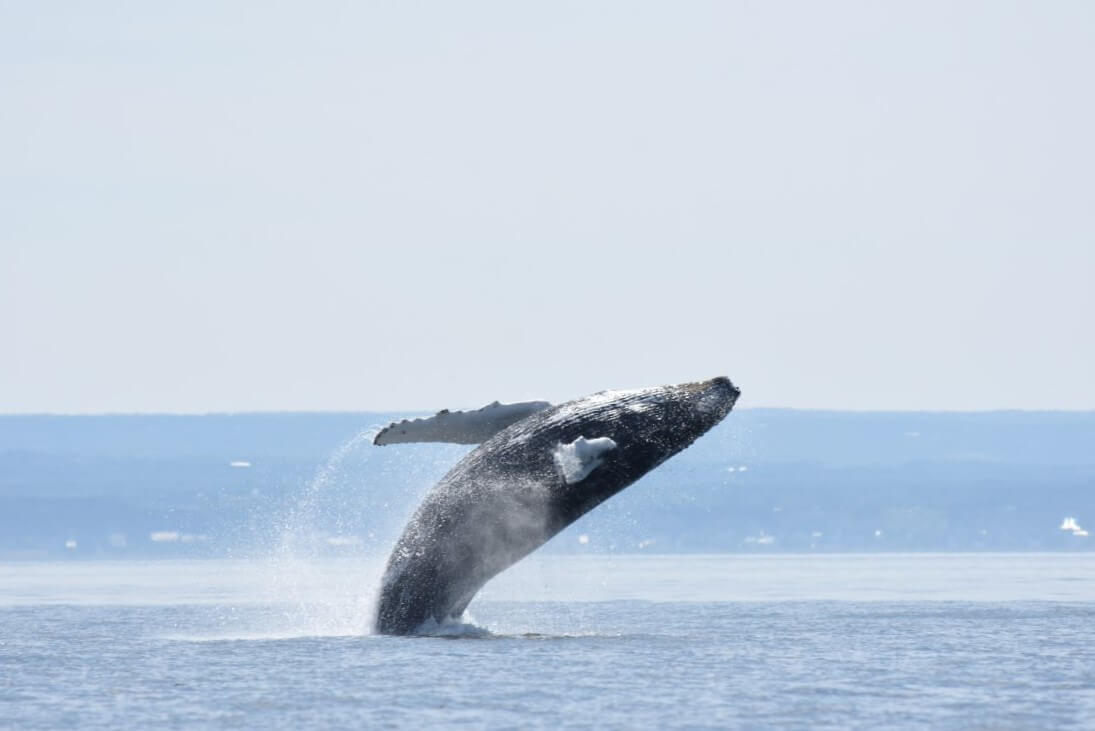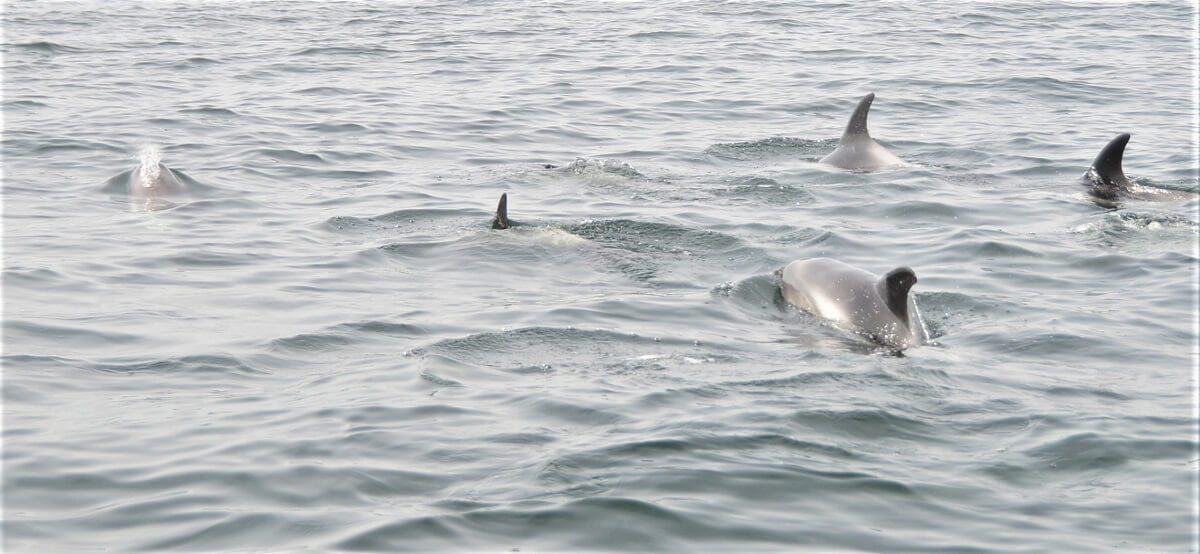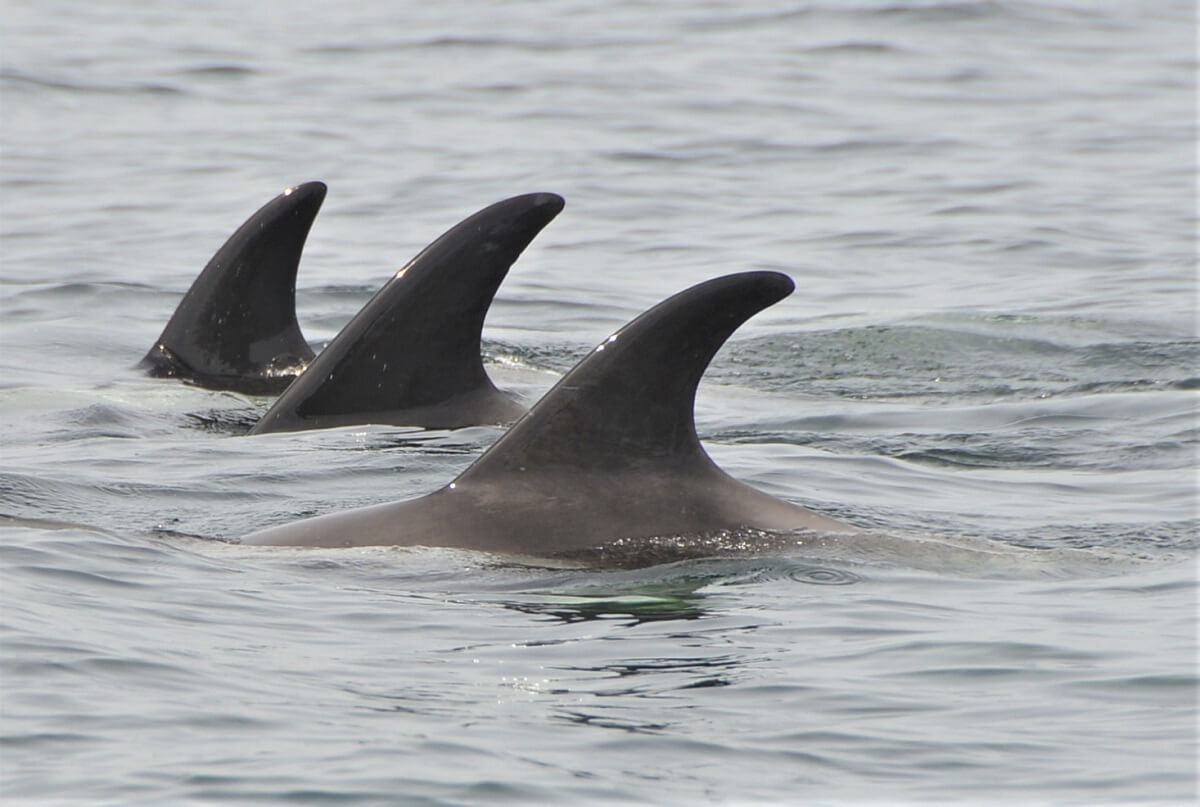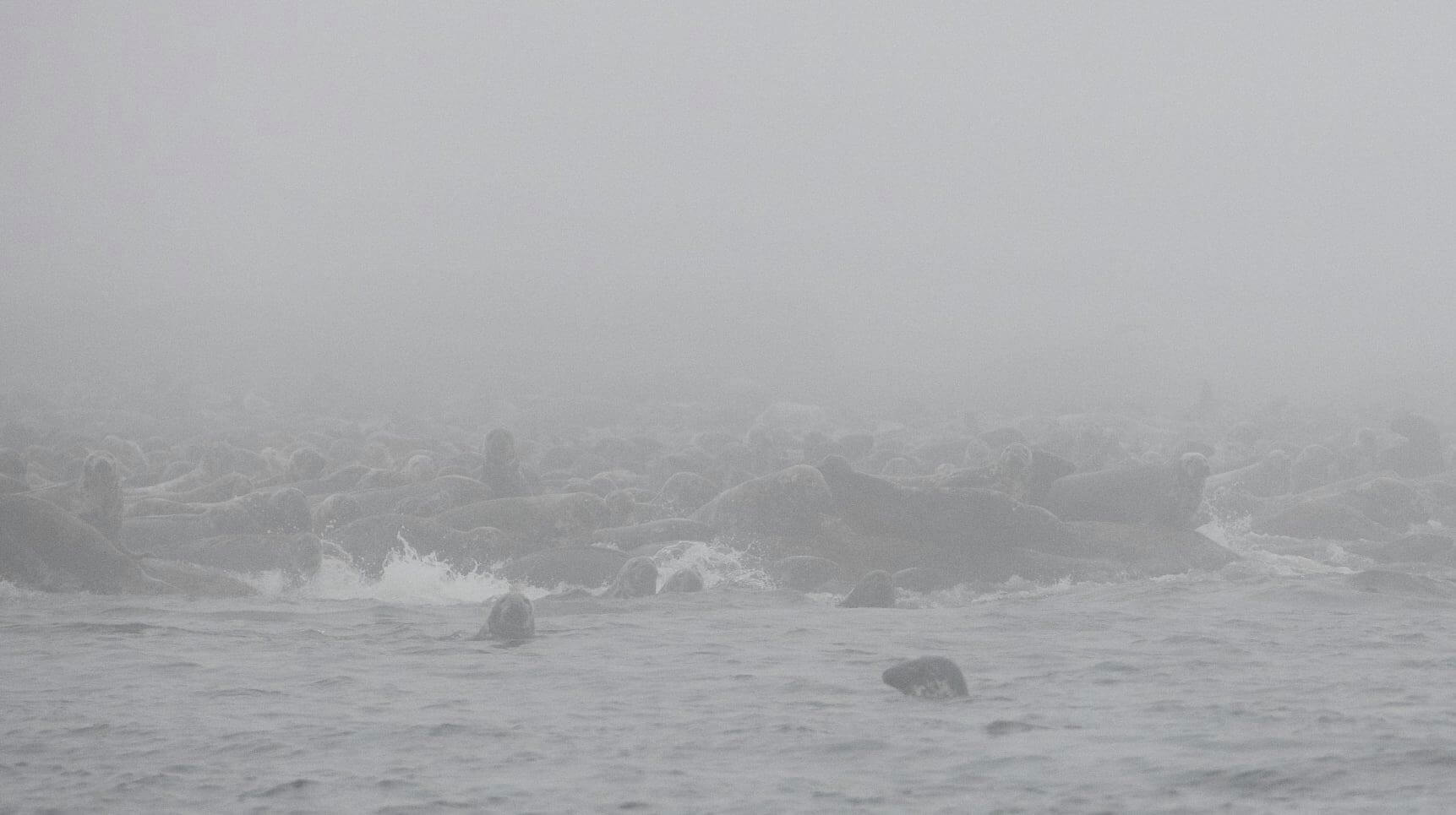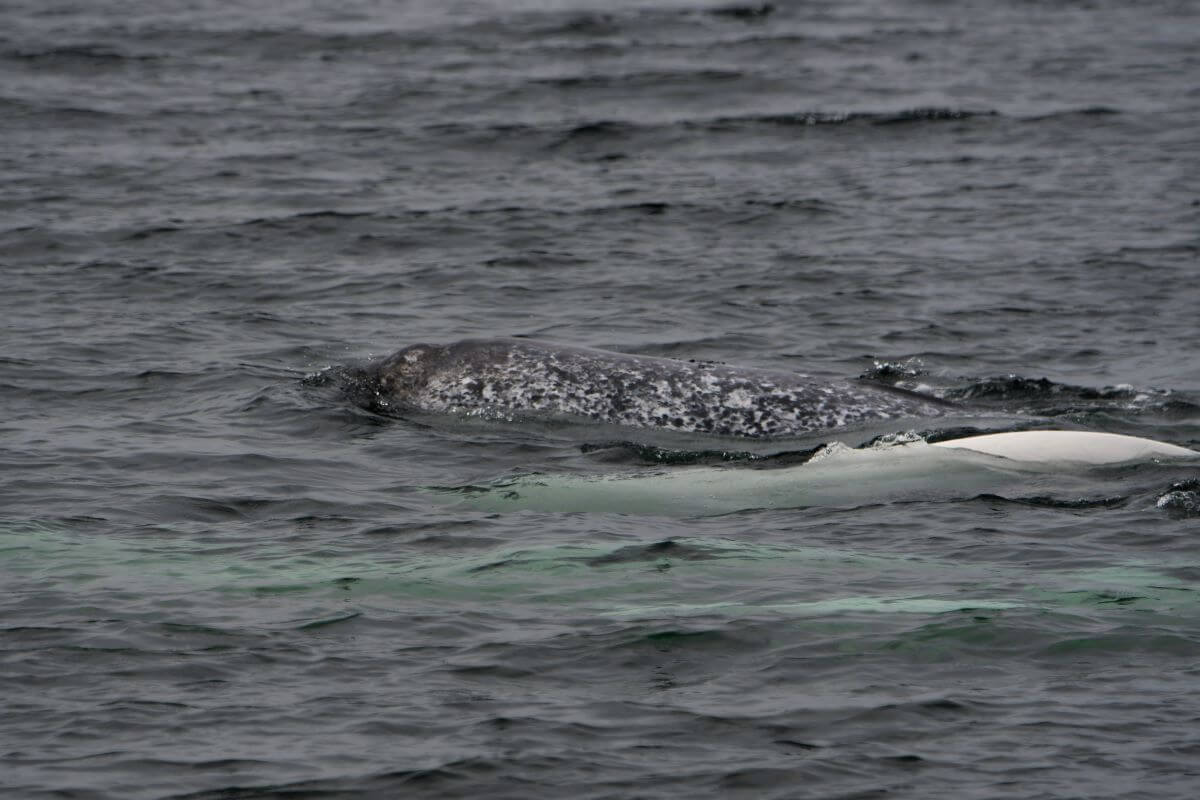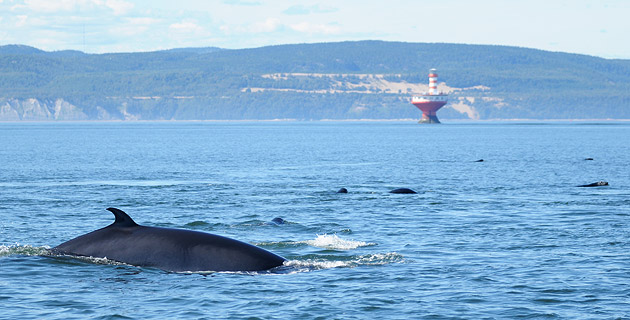A narwhal that thinks it’s a beluga, unidentifiable humpbacks and minke whales in search of recognition. This week, the whales of the St. Lawrence make us wonder about the notion of identity.
At a time when humans have to prove who they are using a QR code to enter a bar or restaurant, humpbacks shamelessly show off their “ID.” When it dives, this giant with oversized pectoral fins generally lifts its tail in the air for a few seconds… leaving just enough time for seasoned observers to take a photo and identify the individual thanks to the unique colour pattern on the underside of the caudal fin. For the past several decades, researchers from the Mingan Island Cetacean Study (MICS) have been identifying humpback whales in the St. Lawrence. The catalogue maintained by this organization features several hundred individuals, some of which have an official name while others are only referenced in the form of an alphanumeric code.
Hello, beautiful stranger!
This week in the Saguenay-St. Lawrence Marine Park, sightings were made of Tic Tac Toe, Siam, Chewbacca, Cédille and Le Souffleur, as well as H847, H915, H916 and H932. But surprisingly, in the midst of these familiar caudal fins, a large number of unknown individuals were also observed. These newcomers – which currently number around ten or so – do not seem to match any of the individuals in the catalogue.
Same story off the Gaspé coast, where humpbacks are still present in numbers, with reports of between 2 and 6 individuals depending on the day. Besides a few minke whales, the fleeting glimpse on August 29 of a fin whale and a pod of 20 porpoises, other species are becoming rare. As in the Estuary, our observers in the Gaspé have been seeing many individuals not featured in the catalogue and wondering: “Where are all these new animals coming from, most of which, even if they’re small, seem to be adults?” The answer is probably related to the global recovery of this species, the vast range of the Atlantic population, and perhaps also the fact that less effort has been made to identify new individuals due to the COVID-19 pandemic. Whatever the reason for their mass presence, humpbacks make the St. Lawrence pulsate with their acrobatics.
This week, the two “hot spots” for watching cetaceans are inarguably the Sept-Îles region and the Marine Park. A delighted employee at the radar station in Les Escoumins writes: “Wednesday was absolutely incredible: definitely the best day of whale-watching I’ve had in the last 3 years! For me, such an awesome spectacle is unheard of. I was able to observe 13 humpbacks, including one that breached just in front of the rocks, 10 minke whales, 7 fin whales, 4 belugas and a grey seal.”
Between Sept-Îles and Port-Cartier, amateur cetologist Jacques Gélineau mentions “7 blue whales including a mother with calf in tow, 10 fin whales, 3 humpbacks, Atlantic white-sided dolphins, white-nosed dolphins, porpoises… We saw practically every possible species in a single outing!”
It’s quieter in the Mingan Archipelago, although Île du Wreck is covered with a thousand seals and a handful of small and large rorquals are still lingering in the area.
Narwhal and its beluga companions
Belugas announce the arrival of autumn with their seasonal migration. They are less and less present on the south shore, giving way to harbour seals and harbour porpoises. In both Cacouna and Kamouraska, only a few belugas are being observed each day. In Rivière-du-Loup, where a dozen or so white backs are seen on a daily basis, one observer is amused to see a group at complete rest: “They weren’t moving, and they weren’t feeding, either. The entire pod was very calm and was barely moving. It’s quite rare here to see them so chill.”
Meanwhile, large herds of white whales punctuate the waters off Tadoussac and Les Bergeronnes, and small groups including young swim up and down the Saguenay Fjord several times a week. Like this Friday, where a large white back and two smaller grey backs surprised kayakers who had launched their crafts from the cove in L’Anse-de-Roche. At the Pointe-Noire Interpretation and Observation Centre in Baie-Sainte-Catherine, a naturalist is excited about two first-year calves swimming just 30 metres from shore. “They still had their fetal folds, a sign that they were born not too long ago!” she exclaims.
As for the narwhal, it was seen last Wednesday not very far from the mouth of the Saguenay in the company of a group of white belugas. His “gang” seems to be made up of young males, probably individuals of more or less the same age. However, the animals that the narwhal pals around with are not always the same, as juvenile groups continually form and disband. During the month of August, this vagrant from the Arctic was even observed by Parks Canada teams in Baie Sainte-Marguerite, always in the company of adults and juveniles. The presence of this speckled grey back in the midst of an otherwise all-white pod systematically triggers shouts of joy. Sticking out like a sore thumb is sometimes a good thing!
PAnonymous minke whales
Whether it’s near the docks in Baie-Comeau or off the beaches in the Magdalen Islands, minke whales have been very active of late. “I observed two of them hunting together,” reports one local resident. One remarkable yet risky behaviour is when they drive schools of fish toward the ropes of periwinkles cages; these ropes act as a barrier for the fish, making it easier for the whales to corral them together and catch them.”
Almost every day, one or more minke whales have also been coming to feed in front of the CIMM in Tadoussac, impressing visitors with their acrobatics. Who are these individuals? We know very little about the minke whales of the St. Lawrence, other than that they are very numerous and that it is mainly females that come to spend their summers in the Estuary. Fortunately, a crew from Mériscope, a research station based in Portneuf-sur-Mer with a particular focus on minke whale monitoring, is currently on the water to try to identify individuals based on their dorsal fins and scars.
Unfortunately, and perhaps unfairly, some species are the subject of greater effort than others with regard to censusing and identification (minke whales, porpoises and pilot whales being amongst the neglected). However, there is no doubt that every cetacean in the St. Lawrence has an adventure-filled life to tell.
Where are the whales this week? Observation map
These data were reported by our network of observers. The observations give a rough idea of the presence of whales, but do not in any way represent the true distribution of cetaceans in the St. Lawrence. Enjoy!
Click on the whale or seal icons to see the species, number of individuals observed, additional information or photos of the sighting. To zoom in on the map, click on the icon in the upper right corner. The map works well on Chrome and Firefox, but less so on Safari.
To display the list of observations, click on the icon in the upper left corner.


